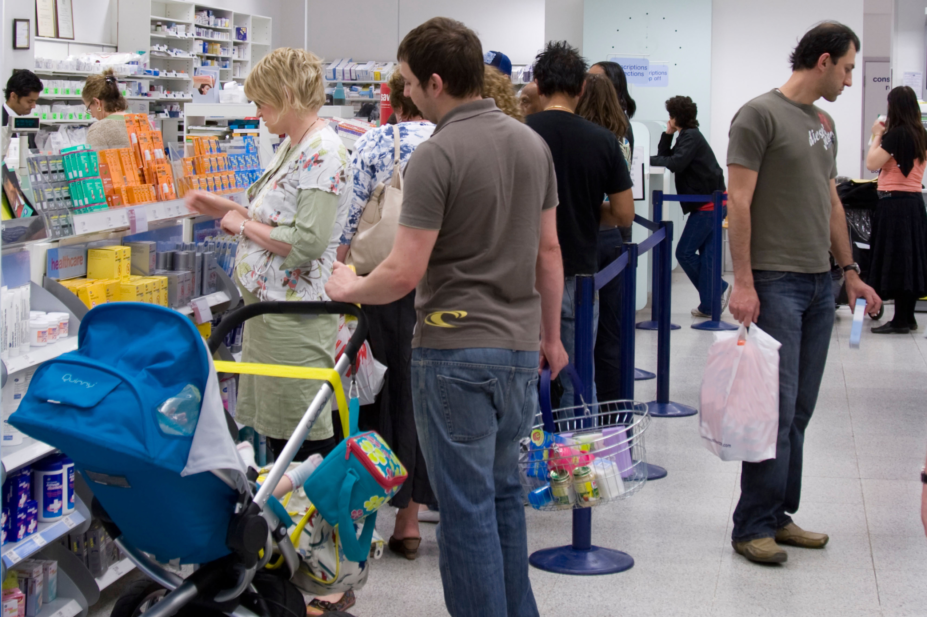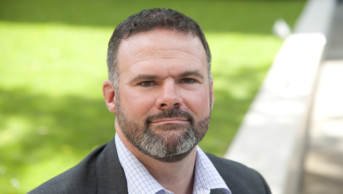
British Retail Photography / Alamy Stock Photo
Just six years ago, in 2013, everyone was talking about a huge oversupply of pharmacists in the UK. In September 2013, the Centre for Workforce Intelligence estimated that there would be a surplus of 19,000 pharmacists in England by 2040.
That situation has now reversed and there is mounting concern among NHS leaders from across England that there are not enough pharmacists to meet demand. Some are even warning that “urgent action” is required to boost pharmacy training places in order for the strategy outlined in the ‘NHS long-term plan’ to be implemented.
Pharmacy staff vacancy rates are on the rise. As of 31 March 2019, there is a mean vacancy rate of 8.1% for all pharmacy staff in hospital trusts, according to figures shared with The Pharmaceutical Journal by the NHS Benchmarking Network.
This is an increase on the previous year’s mean vacancy rate of 7.3%, as of 31 March 2018.
Accurate figures for community pharmacy were not available, but pharmacy owners say that they are also struggling to fill vacant posts, and the pipeline for new pharmacists is not as full as it was (see Box).
Reports state that certain areas of the country — particularly remote areas — are struggling to fill vacant hospital and community pharmacy positions, which is only going to be made worse as pharmacy schools struggle to fill places. Thousands of new pharmacist posts are now being created in primary care networks (PCNs), which were launched earlier in 2019 as part of the NHS long-term plan.
From July 2019, each of the 1,259 PCNs in England, depending on size, could claim part-funding, worth £37,810 for 2019/2020, for one or two new full-time pharmacists to work across all its GP practices and care homes.
Box: Pharmacy pipeline
The number of students applying to study pharmacy in the UK has fallen by more than 20% over the past five years, from 2014 to 2019. In June 2019, the pass rate for the preregistration exam was the lowest since 2011, with just 72% of the 2,942 candidates passing.
Figures from the General Pharmaceutical Council (GPhC) show there were rising numbers of pharmacists on the register as of December 2018, with 57,225 names listed, compared with 53,873 in June 2017.
However, the GPhC’s November 2019 council papers show that the number of pharmacists joining its register has decreased, which it attributes to a low assessment pass rate and fewer registrations from foreign European pharmacists.
Increasing demand
Estimates for the number of PCN pharmacists needed by 2024 vary, but the highest figure so far is 7,500, suggested by Londonwide Local Medical Committees in a briefing on the GP contract in March 2019. However, there are scant answers to where this workforce will come from.
In a report for the integrated care system (ICS)’s local workforce action board, pharmacy leads at South Yorkshire and Bassetlaw ICS — which covers a population of 1.5 million people — warn that although pharmacy was previously classified as a “low-risk recruitment workforce”, this was changing with the growing number of band 7 pharmacists working in PCNs.
“[This] heightens the risk of depletion in the gap that is left behind at band 6, as well as band 7 posts in other sectors,” it says.
The repercussions of this shortfall will not be limited to pharmacy
The report, internally published in September 2019, estimates that between 150 and 200 additional pharmacists are needed to support PCNs across their region and, unless sufficient funding is set aside to improve the pharmacy workforce, plans to improve care “simply won’t happen”.
“The repercussions [of this shortfall] will not be limited to pharmacy,” the report adds. “The detrimental impact will be felt by the wider system. Urgent action is required to significantly increase the number of training places funded if we are to avoid the significant risk of having inadequate numbers of appropriately qualified and trained pharmacy staff to support the aspirations of the plan.”
Damian Child, chief pharmacist at Sheffield Teaching Hospitals NHS Foundation Trust, which is within the South Yorkshire and Bassetlaw ICS area, says there has been a significant shortfall in education and training funding for several years, with funding being either static or, in some cases, cut.
“This means that when we are successful at getting new establishment posts funded, we frequently cannot fill them in a timely manner and — while its an old cliché, it rings true — we are constantly robbing Peter to pay Paul,” he says.
“It is enormously frustrating to write a workforce plan each year which accurately describes our requirements, only to be told yet again that there isn’t sufficient funding available to train all the staff required. Our ability to recruit staff who are already qualified and trained is hampered by increasing demand everywhere.”
The elephant in the room is that Health Education England is simply not funding enough training places for pharmacy
He adds that his trust is facing a funding shortfall, compared with its workforce plan, of seven preregistration technician training places, four preregistration pharmacist places, two non-medical prescriber training places and one postgraduate clinical pharmacy diploma training place.
“To be frank, we can show leadership, we can collaborate across ICS organisations and we can re-engineer services, but the elephant in the room is that Health Education England (HEE) is simply not funding enough training places for pharmacy, even before the PCNs start ramping up its recruitment, and I’ve already lost four people that we’ve trained to the local PCNs in recent months.”
In a statement, HEE said it “is working with pharmacy leaders and ICS leads to look at the potential challenges raised and find solutions to ensure [it has] the pharmacy workforce required to meet the needs of a 21st century health service.”
Nationwide shortages
These stark warnings are echoed in other areas of England. In Somerset, for example, location may mean there is a smaller pool to choose from for pharmacy vacancies. A spokesperson for the Somerset sustainability and transformation partnership says: “There are concerns locally that an increase in clinical pharmacists working in primary care might draw adversely from the pharmacists working in acute and community trusts”.
“We understand from national sources that the numbers of community pharmacists completing training is good, but attracting the numbers needed to work in the more rural county of Somerset is challenging.”
In urban Manchester, where healthcare has been largely devolved from the central NHS, a spokesperson from Greater Manchester Health and Social Care Partnership says there is local concern at a fall in numbers of applications to schools of pharmacy, and that in Manchester there had been “significant movement across sectors”, mainly from the hospital sector into general practice.
But, the spokesperson adds, “it has not been the case that this has caused mass migration and shortages in other sectors”.
NHS Providers, which represents hospital trusts, says there are already “workforce challenges” within pharmacy. Miriam Deakin, its director of policy and strategy, expressed concern that the creation of PCN pharmacists would just spread the pharmacy workforce even more thinly.
Deakin adds there is a “limited talent pool” from which PCNs and providers could recruit pharmacists and that the two types of organisation must work together to plan workforce needs.
Pharmacists are difficult to recruit in remote areas and because of the evening and weekend working often involved
“There is legitimate concern among both trusts and PCNs that we could end up shifting resources between different parts of the [healthcare] system rather than recruiting and training new people in these roles,” she says.
“This concern is coupled with existing workforce challenges in these professions. Pharmacists are difficult to recruit in remote areas and because of the evening and weekend working often involved.”
This problem is hard to tackle and may vary area by area. As Christopher John, head of workforce policy and projects at the Royal Pharmaceutical Society, points out: “Better workforce intelligence would enable plans to be put in place to address variations in supply and demand that exist.”
“I think that there’s a shortage of pharmacists generally,” Simon Dukes, chief executive of the Pharmaceutical Services Negotiating Committee, comments: “Certainly community pharmacy is suffering from a lack of pharmacists; whether that’s because they’re all going into clinical or PCN-type roles … that I don’t know”.
However, a shortage of pharmacists may be beneficial for individuals with the right qualifications.
For instance, a spokesperson from the Greater Manchester Health and Social Care Partnership says that pharmacy moves from secondary to primary care must be “balanced with greater recruitment to hospital pharmacy, and a review of on-call and weekend working as part of improving terms and conditions of employment”.
“What has been evidenced is an increase in pharmacists working in split roles and portfolio working across differing sectors,” the spokesperson adds. “This can support the development of a more adaptable workforce and clinicians with wider experience.”
Ash Soni, a non-executive director of the National Association of Primary Care, which represents primary care professionals, agrees. He sees the creation of PCN pharmacists as an opportunity, rather than a drain on other pharmacy sectors.
There are opportunities for pharmacists to have a portfolio career with a number of roles
“The sector faces challenges just like other parts of primary care and we hope, through the ‘NHS People Plan’, we will continue to strive to have sufficient pharmacists in all settings,” he says.
“There are opportunities for pharmacists to have a portfolio career with a number of roles. There is no reason why a community pharmacist couldn’t be seconded to a PCN or used on a sessional basis. This would give the benefit of not having to employ a pharmacist with all the associated costs.”
However, across the healthcare system, it appears that pharmacists are going to become a precious — and perhaps rarer — resource over the next few years. Paul Rutter, a pharmacy academic based at the University of Portsmouth, agrees that the change will just rearrange the workforce without adding capacity.
“People in community pharmacy and secondary care may move into PCN roles but this creates greater shortages in the areas they moved from. Certain parts of the UK have high vacancy rates in hospitals and are struggling to keep all their community pharmacies open on a day-to-day basis.”


